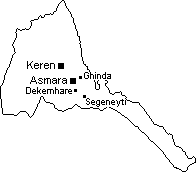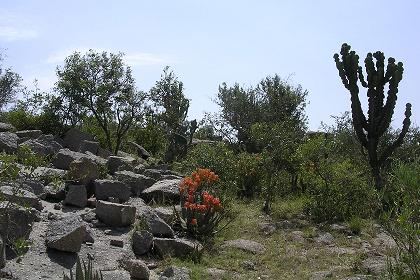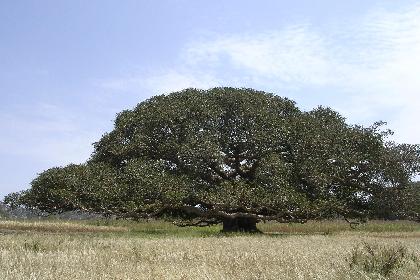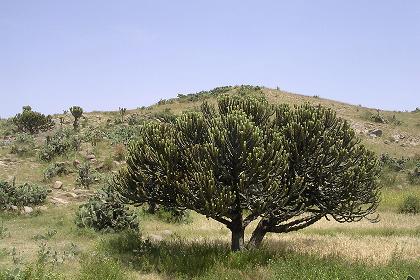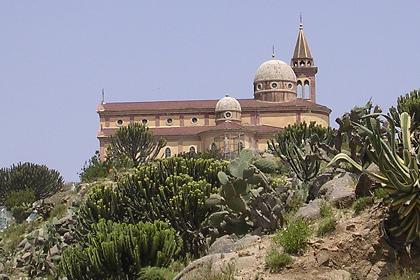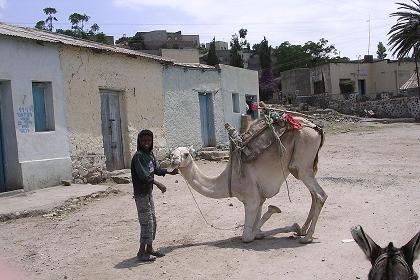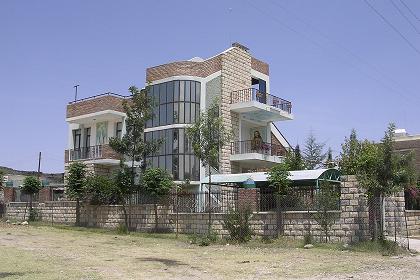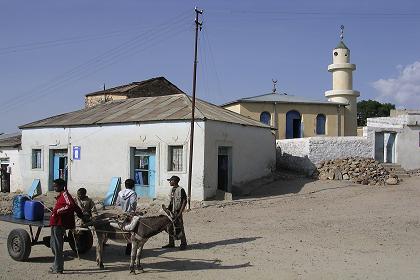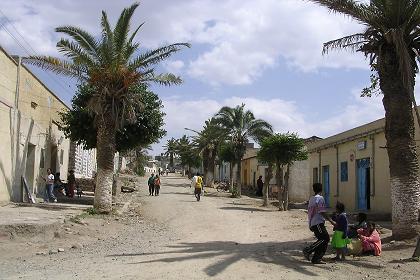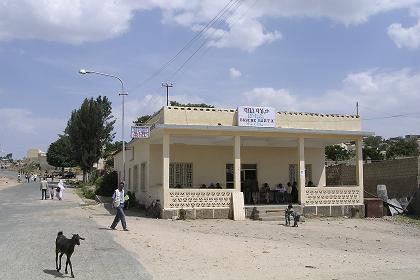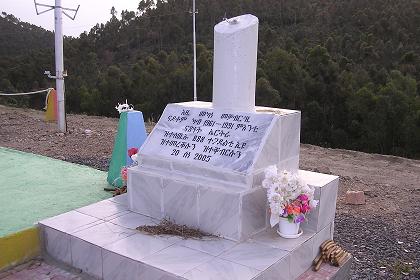| Eritrea September 2005 | ||||||
| Mon | Tue | Wed | Thu | Fri | Sat | Sun |
| 01 | 02 | 03 | 04 | |||
| 05 | 06 | 07 | 08 | 09 | 10 | 11 |
| 12 | 13 | 14 | 15 | 16 | 17 | 18 |
| 19 | 20 | 21 | 22 | 23 | 24 | 25 |
| 26 | 27 | 28 | 29 | 30 | ||
| Eritrea October 2005 | ||||||
| Mon | Tue | Wed | Thu | Fri | Sat | Sun |
| 01 | 02 | |||||
| 03 | 04 | 05 | 06 | 07 | 08 | 09 |
| 10 | 11 | 12 | 13 | 14 | 15 | 16 |
| 17 | 18 | 19 | 20 | 21 | 22 | 23 |
| 24 | 25 | 26 | 27 | 28 | 29 | 30 |
| 31 | ||||||
| next page >> | previous | |||||
| September
- October 2005 Effe naar Eritrea |
||||||
|
||||||
Segeneyti Eritrea - September 24th 2005
I wake up just before it is 4 o'clock in in morning to get an early bus to Senafe. On route to the bus station, I take a taxi, hoping it will help me to get the first bus.
At the bus station the bus to Senafe is fully packed and many people are waiting for the next bus to come in. There is a rush on every incoming bus, just in case it will go to Senafe. It gives me a bad feel. How will I win the struggle for a seat?
An older man tells me that there is enough buses during the day time, but everyone wants the first bus to be in time for his job or business. I have to remember this fact for the next long distance trip.
But on this moment I will just try to win the race for a seat. I lose the battle for the bus to Adi Keyh, but the miracle happens. The boy in the best seat just behind the front door, offers me his seat. I will never know the reason, but I give him 30 Nakfa (so he can travel for free) and sit down, glad to be one of the first to be on route.
Boys and girls are entering the bus, selling chewing gum, watches, bread. I buy some chewing gum and share it with the passengers next to me. At the checkpoints just before entering Dekemhare and Segeneyti I get out to register my travel permit. At 9 o'clock I get out when the bus passes Segeneyti.
I ask for the best hotel. The people point to the Babene Bahta Hotel. At first glance it does not look to bad for the 30 Nakfa (two dollar), so I leave my luggage and look for a nice place to sit in front of the hotel. The waiter points to a free table, but I prefer to share a table with some military men. One of them directs me to a table next to his. "They speak English" is his excuse. I get the point and share a table with three Eritrean soldiers.
I order four cups of tea and start a conversation with the men. When I tell them this is my tenth visit to Eritrea, they want to know if I have learned some Tigrinya. I count to ten in Tigrinya, and then continue with the beasts, "anchewa" (mouse),"ambessa" (lion), "kilby" (dog), "do'mu" (cat), "derho" (chickin), "derho mai" (duck), "veras" (horse), "adgi" (donkey) ending with "hassema" (pig) and "woyane" (the Eritrean nickname for the Ethiopians).
The Woyane joke is communicated to the other tables, in Tigrinya for those that didn't understand. The military men, a bit suspicious at first, are now my friends. The message is clear. "You are an Eritrean!", they compliment me.
We talk about the Eritrean Ethiopian conflict. A recent UN resolution stated that the two countries will have to resolve the conflict themselves. Ethiopia is still unwilling to respect the rulings of the International Court of Justice in The Hague. The logical conclusion is that Ethiopia is provoking another war, hoping the outcome of such a war will be more profitable than the EEBC rulings of the International Court of Justice.
I will visit the enormous sycamore tree, printed on the five-Nakfa note, and therefore known as Da'aro Hamushte. The tree is next to a military camp. I therefore will march with the soldiers. Two kilometers on the road to Senafe and another three kilometers following the road to Hibo (a dirt road on the left).
After a one hour walk through a magnificent landscape - adorned with giant rocks, cacti and AloŽ Vere - I reach the tree, that provides shade for those who need some rest. The military man tells me that the trees were also used as shelters, where the fighters assembled during the war of liberation, a perfect natural hide-out.
Returning to Segeneyti, I again follow the military (there is many of them, marching in both directions), who perfectly know the shortcuts through the landscape. "Segeneyti means 'place of the ostriches'. Segen is Tigrinya for ostrich." I can add one more animal to my Tigrinya vocabulary.
The rest of the day I saunter through the village, or make a short ride on a donkey cart. Women are selling beles, a cactus fruit on the sidewalks of the streets. Children are following me. Want to shake hands, or ask for biscuits of a Nakfa.
The Martyrs Cemetery is one of the last places to go to before sundown. It is on the road to Dekemhare, on a hill. 888 fathers, or mothers, sons or daughters, brothers and sisters are buried here. I say me own little prayer, asking God to stop these useless wars.
Landscape - Segeneyti Eritrea.
Giant Sicomoro tree "Da'aro Hamushte" - Segeneyti Eritrea.
Giant cactus - Segeneyti Eritrea.
St. Michael Catholic Church - Segeneyti Eritrea.
Street scene - Segeneyti Eritrea.
Modern residential building - Segeneyti Eritrea.
Street scene - Segeneyti Eritrea.
Street scene - Segeneyti Eritrea.
Babene Bahta Hotel - Segheneyti Eritrea.
Monument at rhe Martyrs Cemetery - Segheneyti Eritrea.
